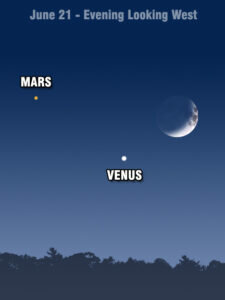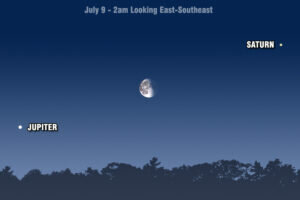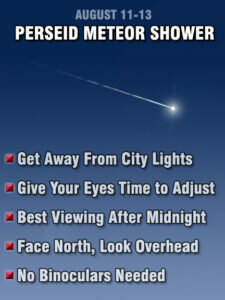By Brad Spakowitz
WBAY Meteoroligist
For the patient observer, the night sky holds something interesting to see on any given night.
But summer nights are the best, as relatively comfortable temperatures allow lengthy stays outdoors. Summer nights also bring an array of sensations, including the smells of blooming flowers and fresh-cut grass, along with the sounds of whispering leaves, chirping crickets and croaking frogs, all adding to the ambiance of the overhead stars.
So, grab a light jacket, a comfortable reclining lawn chair and soak it all in, as our summers are short.
Here are some of the night sky highlights this summer:
The evening of June 3, features a full moon, rising moments after sunset in the southeast and traveling across the southern sky as the night wears on.

Because of the Earth’s tilt and the Moon’s orbit, the Moon’s path across the sky all summer long appears closer to the horizon, giving the illusion of a bigger, more yellow appearing moon - unlike the nearly overhead position of the bright white moon of winter.
As for the planets, Venus takes center stage this month, shining bright white in the west after sunset and setting in the northwest before midnight.
Use Venus as a landmark and look to its upper left to spot a dimmer, orange Mars.
In the eastern sky, yellow-white Saturn rises well after midnight (1:22 a.m.) at the start of the month, with a brighter and whiter Jupiter rising at 3:26 a.m. – so best viewing is mostly for early morning risers.
But by the end of the month, both planets rise earlier: Saturn 11:32 p.m.; Jupiter 1:46 a.m.
Of special note: Mark your calendar for the summer solstice June 21 (9:57 a.m.); despite being the longest day of the year, that evening will bring a beautiful grouping of the crescent Moon, Venus and Mars.
Just like June, a full moon kicks off the month of July, technically full at 6:38 a.m. July 3, so it may look to be fullest the night of July 2. Either way, a nearly full moon will be still present during area fireworks the night of the Fourth.

Venus reaches its greatest brilliance the evening of July 7, bright - but only visible a few hours, setting in the west at 10:30 p.m.
Mars is still to the upper left of Venus, and the crescent Moon joins the two once again the evening of July 20, though not as tightly grouped as in June.
Enjoy Venus while you can, by the end of the month it will be difficult to see, as it will be very close to the Sun by then and heads below the horizon just minutes after sunset.
Similarly, a very faint Mars sets earlier by month’s end, 9:46 p.m. on July 31.
Throughout July, Saturn is rising earlier each night; by mid-July it appears in the east, shortly after 10:30 p.m.
Bright white Jupiter also rises in the east earlier, mid-month poking over the horizon just minutes before 1 a.m., but noticeably earlier over the next two weeks, rising at 11:56 p.m. by month’s end.
An action-packed month starts with a full moon the night of Aug. 1.
This is the first of two full moons this month, and both are ‘supermoons’ - a term used to describe a moon that appears slightly larger and brighter than most - this occurs because the Moon’s orbit around the earth isn’t a perfect circle, so at times the Moon is closer to earth and when it coincides with a full moon it is referred to as a supermoon.
As for the planets, Venus is no longer visible in the evening sky, but by the end of the month will appear in the east just before sunrise.

Mars is very difficult to see; it is faint and barely above the western horizon, setting shortly after the sun.
Saturn and Jupiter continue to rise earlier in the east and will be prominent evening sky objects by the end of the month; Saturn rising at 7:21 p.m.; Jupiter rising at 10 p.m. on Aug. 31.
The highlight of the summer occurs Aug. 11-13, as the Perseid meteor shower will be at peak bringing the potential for dozens of meteors per hour.
This is the most famous and reliable meteor shower of the entire year and is known for fast moving bright meteors, often leaving a persistent trail.
And then to cap it all off, Aug. 31 brings the second full moon of the month, as mentioned earlier it, too, is a supermoon, and also a blue moon (second full moon in the same month) — and the first blue moon since August of 2021.
Northern Lights
Although northern lights are difficult to predict, we have already seen two amazing displays this year — the first one was on the night of March 23, and the second one was on the night of April 23.
The sun is currently very active as we approach the midway point of its 11-year solar cycle.
As a result, more solar storms are likely to occur, any of which could create more northern lights.
Keep your eyes open.
There is much awaiting you in this summer’s night sky.